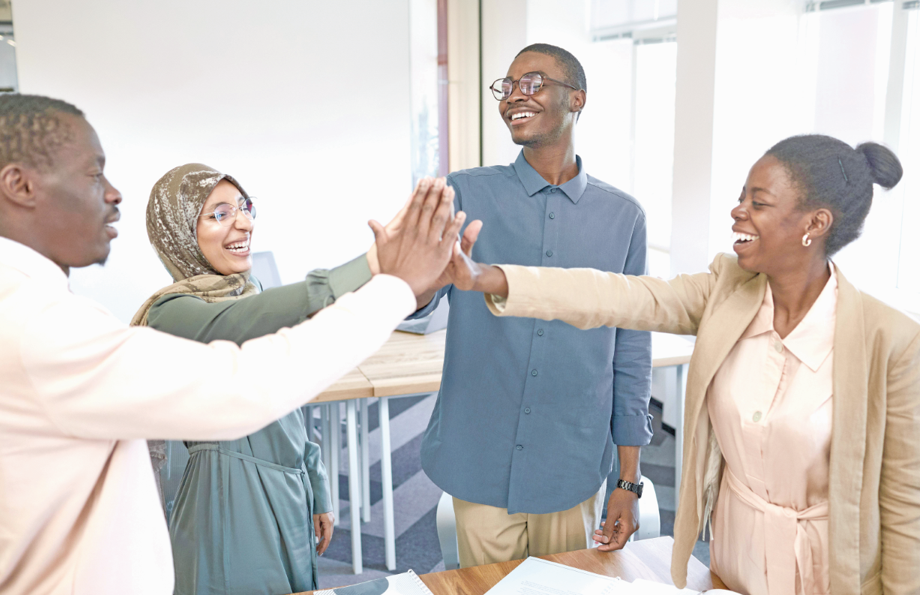Breaking chains for true equality
By ANN.WAIRIMU, March 8, 2024We all have biases when it comes to gender roles. From pre-conceived ideas about the kinds of roles men and women take on at home to the types of jobs that suit them.
Shockingly, a significant portion of the population believes that men should have more rights and opportunities than women. While easily overlooked, these outdated ideas actually have staggering socio-economic ripple effects — limiting women’s agency and costing societies billions, if not trillions, of shillings in lost Gross Domestic Product.
Despite growing awareness of the negative impacts of those discriminatory social norms, change remains frustratingly slow. Based on data from the World Values Survey, the SIGI 2023 Global Report: Gender Equality in Times of Crisis reveals that attitudes have barely shifted between 2014 and 2022. We see some progress: the attitudes towards women’s leadership in the economic and political spheres are improving. But other problematic views persist, such as increase in domestic violence and femicide and the belief that being a housewife is as fulfilling as working for pay.
Dishearteningly, biases related to women’s economic empowerment seem to be worsening, with an increase in the belief that men should have more rights to a job when employment is scarce, and in views that a woman earning more than her husband can be a problem.
As with anything else, resistance to transforming discriminatory social norms into gender-equitable ones often arise from those benefiting from existing power asymmetries, as they fear losing privileges and control. The general lack of awareness and education around the harmful consequences of gender biases — within the home, in social roles, and at work – also play a significant role in perpetuating the status quo. Family and time play a pivotal role. Children absorb norms and stereotypes from a young age, notably by observing household dynamics. Consequently, biases are often passed down through generations, perpetuating gender inequalities over time.
Therefore, to make change happen, policy makers and stakeholders – civil society organisations, philanthropic actors, and the private sector— must work harder together. Long-term commitments, gender-transformative approaches, and gender lenses must be embedded in programmes, projects, and initiatives from conceptualisation to completion.
critical areas that demand concerted action
Educate for change
Education plays a pivotal role in challenging biases and stereotypes, by fostering critical thinking, promoting inclusive curricula, and encouraging respectful dialogue. Schools and educational institutions can provide opportunities for children and young adults to question traditional gender roles, examine societal expectations, and explore diverse perspectives. Equipping adolescents with information on sexual and reproductive health and rights, comprehensive sexuality education, coupled with education on gender norms, values, and power dynamics is also essential.
Turn men and boys into allies
Gender equality is not a zero-sum game: more inclusive societies benefit both men and women. As such, men and boys have a crucial role to play in advocating for inclusive policies, challenging discriminatory behaviours, and amplifying women’s voices. Efforts should also focus on transforming restrictive masculinities into gender-equitable or positive ones, allowing men to embrace more diverse roles and behaviours while enhancing women’s agency.
Change policies and institutional framework
Gender-transformative approaches within policies and institutions are also key. All public and private actors can play a decisive role in establishing environments conducive to equality. Governments and policy makers must enact legislation that addresses gender-based discrimination and ensures equal rights and opportunities. Similarly, companies and private actors can prioritise diversity and inclusion initiatives by implementing diverse hiring practices and extending leadership development programs.
Engage communities and grassroots actors
Local level public awareness campaigns, workshops, and community events can create spaces for conversations about gender equality and harmful impacts of stereotypes as well as curb harmful culture practices such as female genital mutilation and eaqrly marriages. These initiatives can encourage individuals to reflect on their own biases and actively work towards change. Moreover, involving key stakeholders or “gatekeepers”, such as religious and community leaders, can have a huge impact – as they advocate for gender equality within their respective communities and institutions. This then creates the social acceptance necessary to unlock transformative change.
Leverage the media
The media is a powerful tool that shapes public perceptions. As such, media representation is crucial for dismantling gender norms and showcasing diverse narratives. Media outlets must actively avoid perpetuating harmful stereotypes. By highlighting positive and empowering stories, putting the spotlight on positive role models, and incorporating edutainment content – programmes or projects intended to be both educational and enjoyable – the media can contribute to shifting societal attitudes.
